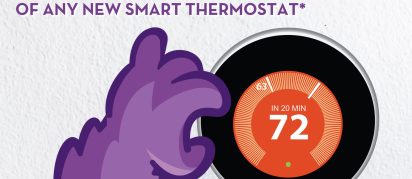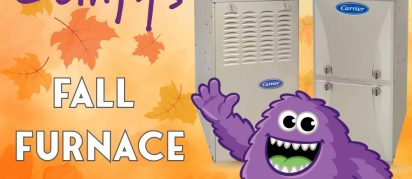What Air Filters Should You Use and How Often Should You Change Them?

What type of air filter should I buy for my HVAC system?
Knowing which air filter to buy is important when it’s time for a replacement. In this article, we’ll take you through what matters and help you make a good decision.
Step 1: Like getting a checkup from your doctor before you start exercising. Sufficient airflow is very important to the proper function and efficiency of your system. If your system wasn’t originally designed with enough ductwork to properly deliver and return all of the air your system produces, then adding anything more than the flimsy blue filters will make your problems worse. Get a professional to evaluate your ductwork for proper airflow before you consider upgrading your filters.
Step 2: Once you have a clean bill of health, you can go explore the wide world of air filters. There are several main types:

- Fiberglass– Fiberglass filters have been the most common for decades. They are the flimsy cardboard with blue or green fiber in the center. They are made from adding multiple layers of fiber to create a sort of web to trap dust and dirt. They do stop big stuff, but also let through lots of smaller particles that either remain in your air or become trapped inside your HVAC system or ductwork. Fiberglass filters are not generally recommended except in special circumstances.
 Pleated – Pleated filters offer a wide variety of options so you can choose what MERV rating you want. Higher MERV ratings offer better filtering but also restrict more airflow. If you haven’t had your HVAC system checked, start at a MERV 6 and have a professional take a look at your system before you go up any further.
Pleated – Pleated filters offer a wide variety of options so you can choose what MERV rating you want. Higher MERV ratings offer better filtering but also restrict more airflow. If you haven’t had your HVAC system checked, start at a MERV 6 and have a professional take a look at your system before you go up any further.
The table below will help you choose which filter to buy if restriction isn’t an issue on your system:
| MERV 6 | MERV 8 | MERV 11 | MERV 15 |
|
|
|
|
 HEPA – HEPA is a specific industry term that should define a certain level of efficiency in trapping particles larger than 0.3 micrometers (microns). The American standard is 99.97%. HEPA filters are often used in hospitals and airplanes to prevent the spread of airborne viral and bacterial organisms. You should be careful when purchasing HEPA filters because there are many products that claim HEPA level filtering using terms like “HEPA-type.” Like other filter types, be sure that what you purchase isn’t too restrictive for your HVAC system and ductwork.
HEPA – HEPA is a specific industry term that should define a certain level of efficiency in trapping particles larger than 0.3 micrometers (microns). The American standard is 99.97%. HEPA filters are often used in hospitals and airplanes to prevent the spread of airborne viral and bacterial organisms. You should be careful when purchasing HEPA filters because there are many products that claim HEPA level filtering using terms like “HEPA-type.” Like other filter types, be sure that what you purchase isn’t too restrictive for your HVAC system and ductwork.
How often should I change my air filters?
The majority of air filter manufacturers advise you to replace your standard home filter at least every other month. That may be fine, or it might be too often or not often enough. It’s important to keep in mind that every home is different, so you will want to consider the unique circumstances of your home to determine if once a month is enough. There are numerous factors that determine when you should change your filter and what kind of filter to use. Consider factors such as:
- Pets in the home
- Living location (& air quality outside)
- How many people you have living in your home
- Proximity of your filters to the ground
The more pets you have, the more often you will need to change your filter. Pet dander in the air tends to clog up your filters quicker. Same goes for humans living in the house—the more humans, the more often you will need to change your filter. Where you live matters, as areas with higher levels of smog, pollution, and other air contaminants in your area may require you to replace your filter more often. Often air filters that are located close to the ground, especially when you have hard surface floors tend to “suck up” lots of particulate.
You can visually inspect your filters. If they look saturated and they are “bowing” in from the air pressure, or if they’re making a whistling sound, it’s probably time to change them. If they look clean and appear to be free-flowing, you can probably wait a bit longer.
If you aren’t sure about how often is right for your home, ask your friendly HVAC professional next time he or she is there for your maintenance agreement visit.



